 Proceedings of an International Conference held 22-24 September 1998
Proceedings of an International Conference held 22-24 September 1998
ISBN 0 906940 338, Softbound, 1998
Order reference C19, Price: Non-members £85, members £76.50
As the offshore industry moves steadily into deeper water, and the use of man and manned vehicles becomes increasingly dangerous, expensive and impracticable, so the tools of remote intervention have to be developed and exploited. These proceedings promote these technologies, and are applicable to a variety of industries, including hydrocarbon exploration companies, defence industries, deep ocean mineral exploitation, and salvage operations.
The volume contains papers, presented at an SUT international conference on 10-12 April 1997, by specialists in remote intervention and robotic technology, analysing state-of the-art systems. The authors look ahead at other technologies that can be utilised, emphasising industry’s requirements for the next millennium under the sea.
Contents
New Frontiers-The Challenges
- Opening Address – D Walker, BP Exploration, USA
- Future Geophysical Site Investigation: Looking for an Improved Depth of Field and Sharpened Focus – A Hill, BP Exploration, USA
- Deepwater Development-The Metocean Challenges – C Graham, Shell International Deepwater Services BV, The Netherlands
- Sedimentary Processes on the Continental Slope-Perspectives for Site and Hazard Investigation – DG Masson et al, Southampton Oceanography Centre
- Geotechnical Challenges West of Shetland – TG Evans et al, BP Exploration; McDermott Marine Construction Ltd, Kvaerner Oil and Gas; Aker Marine Contractors; and Cofleip Stena Offshore
Geohazards
- The Investigation of Deepwater Geohazards Using Short Offset, High-Resolution Marine 3D Equipment – C Sonnier, John E Chance & Associates, Fugro, USA
- Glory Hole Construction and Trenching Challenges, Offshore Canada – M Finch, Coflexip Stena Offshore, UK
- Geohazards on the Continental Slope West of Shetland – A Read, Maritech Consultants, UK
Deepwater-Regional Assessments
- The Western Frontiers Association- an Example of Joint Industry Funded Regional Studies of the Shallow Geology in a Frontier Region – D Long et al, British Geological Survey, UK; Shell Exploration and Production, UK; and BP Exploration Inc, USA
- Use of Integrated Study to Characterize the Marlin Deepwater Site – P Jeanjean et al, Amoco Corporation, USA; Fugro-McClelland Marine Geosciences Inc, USA, and Norwegian Geotechnical Institute, Norway
- Shallow Gas Migration Mechanisms in Deep Water Sediments – AG Judd, University of Sunderland, UK; and RH Sim, Fugro-Geoteam, UK
- The GEOSIS Method for Integrating VHR Seismic an Geotechncal Data in Offshore Site Investigations – J-F Nauroy et al, Institut Fran-ais du P-trole; Total; and IFREMER, France
- Sample Disturbance effects in Deep Water Soil Investigations – T Lunne et al, Norwegian Geotechnical Institute, Norway
- Improved Seabed Strength Profiling Using T-Bar Penetrometer – MF Randolph et al, University of Western Australia and Advanced Geomechanics; and Fugro Engineers BV, The Netherlands
- A Review of Soil-Steel Interface Testing with the Ring Shear Apparatus – N Ramsey et al, Fugro, UK; Imperial College, UK; and Trinity College, Ireland
- Minimal Intervention DCS for Well Buoy Applications – RA Hawkins, Fugro Ltd, UK; and A Markus, Fugro Engineers BV, The Netherlands
Foundation Behaviour, Part I-Suction Foundation
- Behaviour of Miniature Suction Cassions in Clay – AJ Whittle et al, Massachusetts Institute of Technology, USA; and Dames and Moore, USA
- Pull-out Capacity of Bucket Foundations in Soft Clay – L Zdravkovic et al, Imperial College of Science, Technology and Medicine, UK
- Comparison and Back Calculation of Penetration Resistance from Suction Anchor Installation in Soft to Stiff Clay at the Njord and Visund Fields in the North Sea – E Solhjell et al, Norwegian Geotechnical Institute; and Norsk Hydro, Norway
- Foundation Behaviour, Part II-Piled and Gravity Based Structures
- Foundation Design of Wandoo B Concrete Gravity Structure – C Humpheson, Arup Geotechnics, UK
- The Applicability of the New Imperial College Pile Design method to Calcerous Sands – GWL Thompson, Brown and Root Energy Services, UK; and RJ Jardine, Imperial College of Science, Technology and Medicine
- The Implications of the Load and Resistance Factor Design Method for North Sea Pile Design – AKC Smith et al, Fugro Ltd; and BOMEL Ltd, UK
Pipelines
- Design and Operation of a Seafloor Burial Asessment System – TM McGinnis and ME Williamson, Williamson and Associates Inc, USA
- Geotechnical Investigation for Performance Prediction of Submarine Trenching Ploughs – PG Allan, SEtech Ltd, UK
- Pipeline Foundation Considerations – M Finch, Coflexip Stena Offshore, UK; and JB Machin, Ceanic Corp, USA
Case Studies
- Frontier Geohazard Site Investigations-Experiences from the Caspian Sea – R Orren and I Hamilton, Fugro-Geoteam Ltd, UK
- Advances in Technology for Integrated Route Analysis – NT Carey et al, SAGE Engineering; and Mentor Engineering, UK
- Safety Implications for Offshore Foundations of Conductor and Shallow Well Drilling – R Hobbs and DWF Senner, Lloyd’s Register Offshore Services, UK
- Endurance and Stabillity of Steel Structures on the Seabed – R Haworth et al, SLP Engineering; Oxford University; and Kvaerner Process, UK
A Report on an International Technology Service Mission to Korea and Japan: 8£19 June 1998
ISBN 0 906940 34 6, Ringbound, 1998
Order reference C18, Price:Non-members £10, members £9
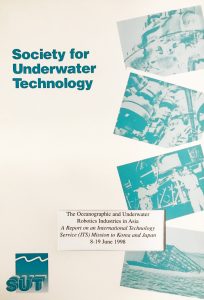 This report covers the findings of a Trade Mission sponsored by the Society for Underwater Technology (SUT) through the International Technology Service (ITS) of the Department of Trade and Industry (DTI). This Mission was concerned with finding the present state and future plans in Korea and Japan of both the oceanographic information and underwater robotics industries, the latter including remotely operated vehicles (ROVs) and autonomous underwater vehicles (AUVs). The Mission took place in June with four working days spent in the Republic of Korea, and then five working days in Japan.
This report covers the findings of a Trade Mission sponsored by the Society for Underwater Technology (SUT) through the International Technology Service (ITS) of the Department of Trade and Industry (DTI). This Mission was concerned with finding the present state and future plans in Korea and Japan of both the oceanographic information and underwater robotics industries, the latter including remotely operated vehicles (ROVs) and autonomous underwater vehicles (AUVs). The Mission took place in June with four working days spent in the Republic of Korea, and then five working days in Japan.
Government departments, Government research institutes, universities and industry were visited where comprehensive briefings were given, questions answered and tours of the facilities provided. This report sets out the findings, in which the team members have tried to assess the strengths, weaknesses of the two countries in their areas of interest, to assess the opportunities for UK industry and to indicate potential threats to UK industry from these countries.
The busy reader will get the gist of the report from the Executive Summary, amplified by the Analysis section in the country of interest. However, to those who do not have experience of either country but have a serious interest in doing business there, the cultural and economic background sections of the report are thoroughly recommended, as are the comprehensive annexes on ROVs and AUVs.
Contents
- Executive Summary
- Republic of Korea: Overview, Analysis and Conclusions
- Japan: Overview, Analysis and Conclusions
- General Conclusions
- Mission Objectives
- Mission Members
- Mission Programme and Visit Reports – Korea Korean Ocean Research & Development Institute (KORDI), Korean Institute of Machinery and Metals (KIMM)/Korean Research Institute of Ships and Ocean Engineering (KRISO), Seoul National University (SNU) – Department of Ocean Engineering,, Daewoo Heavy Industries Ltd – Shipbuilding Division;
- Mission Programme and Visit Reports – Japan Science and Technology Agency (STA), JAMSTEC, Tokyo University, Fisheries Institute, Kokusai Denshin Denwa (KDD), Japan Maritime Safety Agency – Hydrographic Department, Tokai University, Mitsubishi Heavy Industries Ltd – Kobe Shipyard & Machinery Works, Mitsui Engineering & Shipbuilding Co Ltd – Tamano Works
- Background Briefing: Japan in July 1998
- ROVs: Further Details
- AUVs: Further Details
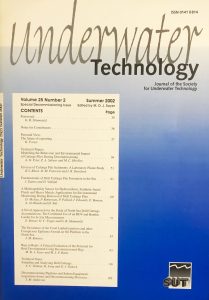 Science of Decommissioning Special Issue
Science of Decommissioning Special Issue
ISSN 0141 0814
Price: Non-members £30, members £27
This publication is currently unavailable for purchase.
The Society for Underwater Technology is pleased to announce the publication of the second Special Issue of the SUT journal Underwater Technology.
As hydrocarbon resources begin to run out in some areas of the North Sea, production companies are beginning to turn their attention to the process of decommissioning platforms and the associated pipelines and subsea installations. This increasingly political process has been highly influenced by the OSPAR 98/3 agreement which effectively means that large amounts of oil and gas associated infrastructure in the North Sea will have to be removed upon cessation of exploitation.
The issues surrounding decommissioning are large and wide ranging. The programme will present the industry with huge engineering challenges and, along with the public exchequer, major costs. It is a process that will affect the industry and science for many decades. It is hoped that this publication goes some way to laying the foundation for some of the work ahead.
Contents
- Foreword – GB Shimmield, Director of the Scottish Association for Marine Science
- Personal View – K Forrest, Director of the International Oil and Gas Business Directorate
- Papers
- Modelling the behaviour and environmental impact of cutting piles during decommissioning – AO Tyler, ZA Sabeur and MC Hockley
- Erosion of cutting pile sediments: a laboratory flume study – KS Black, DM Paterson and IR Davidson
- Fundamentals of drill–cutting pile formation in the sea – I Eames and D Vadnjal
- A multi–capability sensor for hydrocarbons, synthetic based fluids and heavy metals: applications for environmental monitoring during removal of drill cutting piles – D McStay, P Robertson, P Pollard, I Edwards, E Bonsen, A Al–Obaidi and D Tait
- A novel approach for the study of North Sea drill cutting accumulations – E Breuer, OC Peppe and GB Shmmield
- The occurrence of the coral Lophelia pertusa and other conspicuous epifauna around an oil platform in the North Sea – JM Roberts
- Rigs to reefs: a critical evaluation of the potential for reef development using decommissioned rigs – MDJ Sayer and MSP Baine
- Sampling and analysing drill cuttings – AC Skinner, D Long and GJ Tulloch
- Decommissioning pipelines and subsea equipment: legislative issues and decommissioning processes – JM Anderson
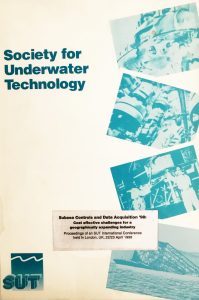 Cost Effective ‘Challenges’ for a Geographically Expanding Industry
Cost Effective ‘Challenges’ for a Geographically Expanding Industry
Proceedings of the international conference, held April 1998
ISBN 0 906940 32 X, Softbound, 1998
Order Reference C17, Price: Non-members £65, members £58.50
SCADA is a unique, long established international conference which represents the oil industry control systems groups and deals with control, communication, remote data acquisition and the enabling technologies associated with hydrocarbon exploitation from the subsea environment.
This international conference reflects the offshore industry’s response to the challenge of exploiting marginal fields. A recent report commissioned by the Director General of the European Commission stated that marginal fields will make up 50% of production in the North Sea by 2005, and innovative production and control techniques are required to make them as cost effective as possible.
Contents
- Deepwater Production Systems – M Taulois
- EPIC Contracts: The Contractors Viewpoint – P Campbell
- Intervention on Subsea Production: Flow and Process Control Equipment – J Thoresen
- The Foinaven Umbilical Performance Monitoring Systems–Performance Review – GL Lyons et al
- Multiplex Drilling and Production Control System Developments for Deep Water – H Clayton
- Development of a Deep Water Workover Control System – D James
- ROV Capabilities – D Hartley
- APAC Concept: A New Umbilical-Less Control System – S Byrne
- Optical Communication System – P Wright and G High
- Integrated Control and Monitoring of a High Power Subsea Electrical Distribution System – NA Sølvik and V Hutchings
- ARMS–Active Reservoir Management System for Intelligent Well Control – N Douglas
- Distributed Control Systems – G High
- Open Architecture DCS for Well Buoy Applications – R Smith
- An Application of Subsea Distributed Controls – C Vigne
- HP/HT Subsurface Safety Valve Control – T Globe and R Smith
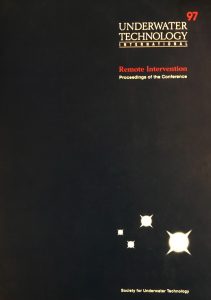 Proceedings of the international conference, held April 1997
Proceedings of the international conference, held April 1997
ISBN 0 906940 30 3, Softbound, 1997
Order Reference C15, Price: Non-members £85, membser £76.50
As the offshore industry moves steadily into deeper water, and the use of man and manned vehicles becomes increasingly dangerous, expensive and impracticable, so the tools of remote intervention have to be developed and exploited. These proceedings attempt to promote these technologies, and are applicable to a variety of industries, including hydrocarbon exploration companies, defence industries, deep ocean mineral exploitation, and salvage operations.
The volume contains papers written by specialists in remote intervention and robotic technology, who analyse the state of the current systems. The authors look ahead to see what other technologies can be utilised, emphasising what the requirements of industry are for the next millennium under the sea. It contains 370 pages and 173 figures and tables.
Remote Intervention Experiences
- Shell International Deepwater Developments – R W Dee, Shell International Exploration and Production BV
- From Sea to Space, A Perspective on the Effect of Subsea Remote Intervention Techniques on Space Station Design – G Hughes, Oceaneering International; and M Gittleman, Oceaneering Space Systems
- The Statoil Deepwater Pipeline Repair System – D Norman, Subsea Offshore Ltd
- Remote Rigid Spoolpiece Tie–ins – G Corbetta, SASP Offshore Engineering
- MAC Manifold–A Revolutionary Concept in Deepwater Production, J Mair, Subsea Offshore Ltd
Recent Advances in New Technologies and Techniques for Remote Intervention
- Overview of Fibre Optic Sensor Technology and Potential for Future Subsea Applications – J W Berthold, McDermott/Babcock and Wilcox
- PO/SV–An Aided Inertial Navigation System for Submersible Vehicles – S Woolven, TSS (UK) Ltd, and M Field, Applanix Corp
- The Remote Installation of Pipeline Bundles – I Edwards, Rockwater Ltd
Intervention Robotics and Systems
- Advanced Teloperated Robots for Hazardous Environments – G Pegman and D Hopper, UK Robotics Ltd
- Remote Intervention in the Nuclear Environment – P Misson, Pierre Misson Consulting Engineer
- Recent Innovations in Remote Connection of Standard Bolt Flanges – D Cruikshank, Sonsub International Ltd
- Recent Developments in ROV–Deployed Multibeam – P R Steenstrop, Reson Offshore
Remote Intervention–What of the Future?
- Future Requirements for Deepwater Remote Intervention–Proposal for a Remotely Operated Repair Station – P Szelagowski, GKSS Research Centre
- Back to the Future (Technology on Strings) – P Gledhill, Stolt Comex Seaway
- The RCU System–Workhorse of the Future? – F Hoos, Seatec Underwater Systems BV
- ‘Extracting the Digit’–Time for an ROV Electronics Shake–up? – D Stewart, Kongsberg Simrad Ltd
Designing Now for the Needs of the Future
- Deepwater ROVs–Beyond 2000m – D Stroud, Perry Tritech Inc
- Experience and Current Status with the Subsea NORSOK Standards – O Inderberg, Kongsberg Offshore as; and J Bruun–Olsen, Statoil
- End User Applications of Wideband Piezocomposite Transducer Technology – V Murray and C McLean, Fugro–UDI
AUV Intervention
- The AUV Revolution: Tomorrow is Today! – J McFarlane, International Submarine Engineering Ltd
- ‘Hugin’–An Untethered Underwater Vehicle System for Cost–Effective Seabed Surveying in Deep Waters – N Størkersen, Norwegian Defence Research Establishment; and A Indreeide, Statoil
- The End of Research Ships? ‘Autosub’–an Autonomous Underwater Vehicle for Ocean Science – G Griffiths et al, Southampton Oceanography Centre
- Autonomous Underwater Vehicles for Offshore Surveys – A Bjerrum, Maridan
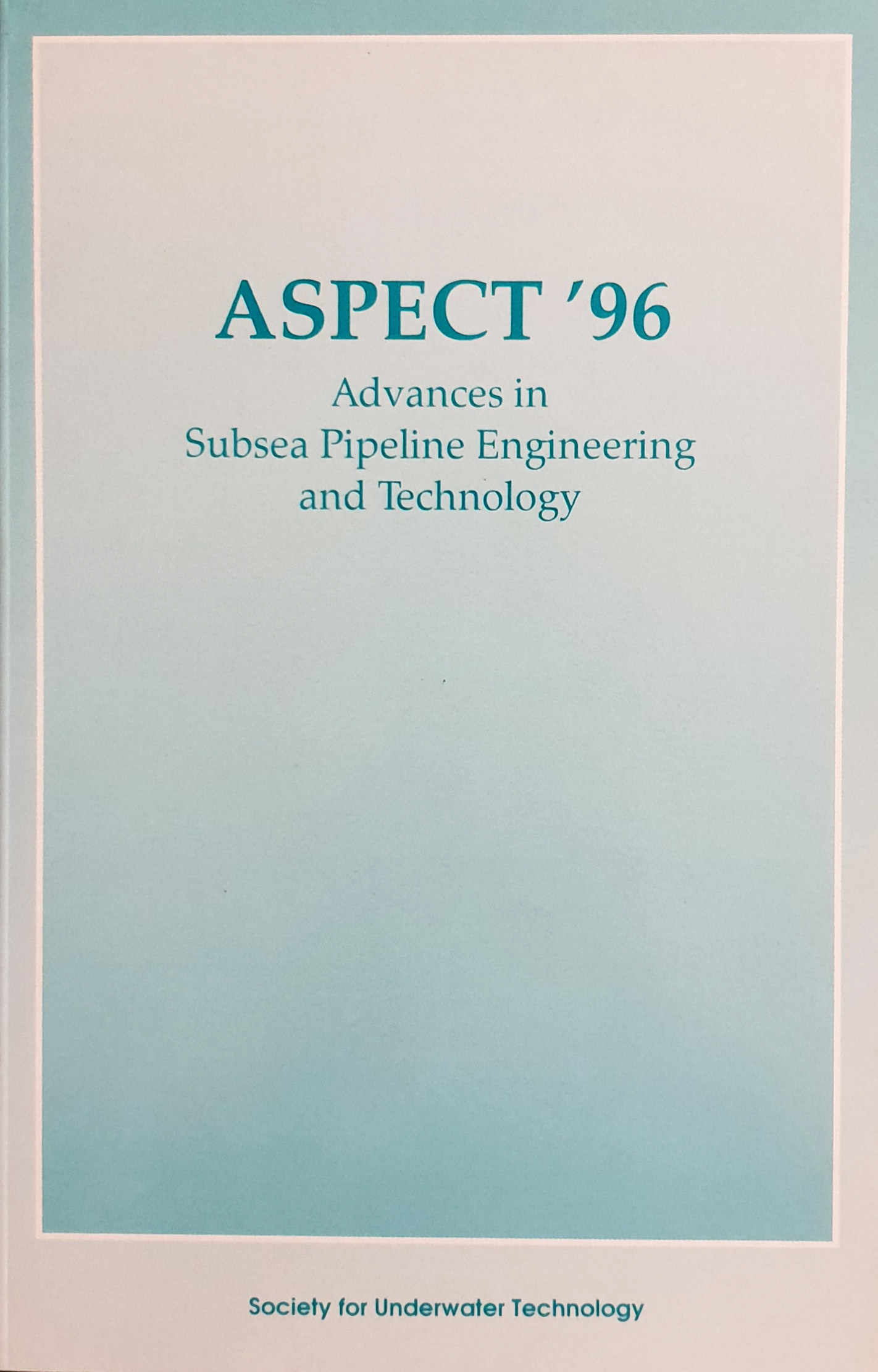 Advances in Subsea Pipeline Engineering and Technology
Advances in Subsea Pipeline Engineering and Technology
Proceedings of the international conference, held 1996 and co–sponsored by the Pipeline Industries Guild
ISBN 0 906940 29 X, Softbound, 1996
Order Reference C14, Price: Non-member £40, Member £36
As reservoirs that a few years ago would not have been considered for development become proposed for exploitation, the offshore industry continues to move into both technically and economically difficult areas. Consequently, the challenge of designing for subsea environments in deep water areas has had to be considered.
These proceedings concentrate on the future of the industry, identifying the requirements for a new generation of pipelines, and will be of value to offshore designers and engineers. Sections are: Managing Pipeline Integrity, Technical Developments, and Deepwater Developments. Also includes 110 figures and tables.
Contents
- Introduction of Pipelines Safety Regulations – S Parkash
- Pipelines Safety Regulations 1996–Impact and Implications – AT Thayne
- FSM–Non–Intrusive Monitoring of Internal Corrosion, Erosion and Cracking in Subsea Pipelines and Flowlines –
- RD Strømmen et al
- Recent Developments in Defect Characterisation Techniques for Flexible Pipes – K Henderson and G Watson
- Assessing the Integrity of Corroded Linepipe–an Industry Initiative – MG Kirkwood et al
- Advanced Crawler Inspection of Risers – A Solberg and W Browne
- Rehabilitation Analysis of the Forties 32–Inch Pipeline – SI McIntyre and M Lamb
- Experiences with Strain Based Limit State Design in the Netherlands – A M Gresnigt et al
- Use (and Abuse) of Strain Based Criteria in Offshore Pipeline Technology – L Vitali et al
- Lateral Buckling of Subsea Pipelines: Comparison Between Design and Operation – D Kaye
- Characterisation of Thermoplastic Liners for Steel Pipes – CJ Hamilton and JC Savidis
- Plastic Liners for Hydrocarbon Service – A Maclachlan and A Headford
- Deepwater Compliant Riser Systems: The Technical Challenges and Solutions – P O’Brien and E O’Sullivan
- Conceptual Design of a Plastic Pipeline in 1000 m Water Depth – RDJ Stentiford and KJ Woolley
Collected papers of the international conference held 1996
Ringbound, 1996
Order Reference C13 This book is currently out of print
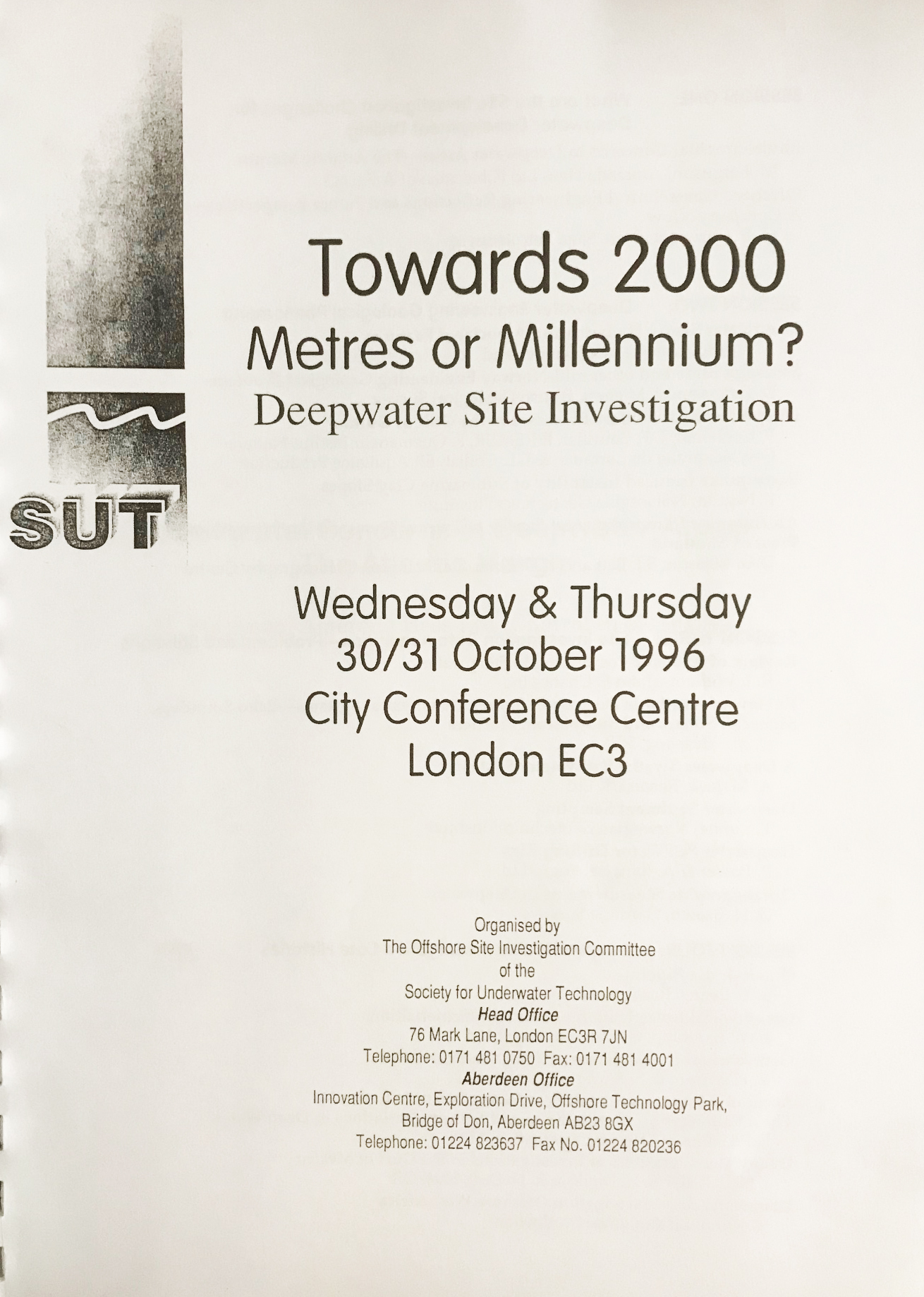 Site investigations on the continental slope and beyond present a multitude of interesting challenges for the oil and gas industry. Acknowledging the increase in deepwater surveys, these papers seek to establish what the challenges are and how to address them. If you have an interest in the fields of deepwater engineering, survey systems or geological phenomena, this volume will be of interest to you.
Site investigations on the continental slope and beyond present a multitude of interesting challenges for the oil and gas industry. Acknowledging the increase in deepwater surveys, these papers seek to establish what the challenges are and how to address them. If you have an interest in the fields of deepwater engineering, survey systems or geological phenomena, this volume will be of interest to you.
Sections are: What Are the Site Investigation Challenges for Deepwater Field Development/Drilling?; Deepwater Engineering Geological Phenomena; Site Investigation Data Acquisition–Problems and Solutions; and Deepwater Site Investigation Case Histories. Also includes 55 figures and tables.
Contents
- Environmental Concerns in Deepwater Areas–The Atlantic Margin – M Ferguson
- Offshore Geotechnical Engineering: Reflections and Future Perspectives–A Company View – HP Christophersen
- Deepwater Seeps, Hydrates and Associated Features – A Judd
- Storegga Slide and other mid–Norway Engineering Geological Problems – D Evans
- Deepwater Sedimentary Processes in the Gulf of Guinea – P Cochonat
- Earthquake Induced Instability of Submarine Clay Slopes – F Nadim
- An Integrated Environmental Survey of Twenty Thousand km– of Seafloor West of Shetland – DG Masson et al
- Review of Acoustic Positioning in Deepwater – R Williams
- Review of Available Deepwater Survey Geophysical Systems–Echo Sounders, Sidescan Sonars and Sub–bottom Profilers – D Hussong
- A Deepwater Swathe Bathymetry System – A Jack
- Deepwater Sediment Sampling – T Lunne
- Deepwater PCPTs for Drilling Rigs – P Power
- Oceanographic Measurements in Deepwater – G Brown
- Oman–India Pipeline – R Evans
- Geophysical Investigation of Foinaven/Schiehallion – I Hamilton
- Geotechnical Investigation of Foinaven/Schiehallion – K Hampson
- Accurate Measurement and Positioning West of Shetland–The Challenges of Temperature and Salinity Variations in Deep Water – DRC Philip
- Deepwater Geotechnical Investigations in the Gulf of Mexico – J Pelletier
- Deepwater Site Investigation Offshore West Africa – H Kuhn
An Assessment of the Impact of Changing Meteorological and Oceanographic (Metocean) Conditions on Offshore Activities
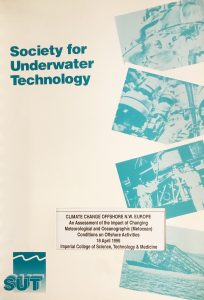 Collected papers of the colloquium, held 1996
Collected papers of the colloquium, held 1996
Ringbound, 1996
Order Reference C12 This book is currently out of print
This volume discusses the mounting evidence of significant changes to the metocean conditions in the North Atlantic, and assesses their impact on offshore operations and coastal engineering activities.
It will be of particular significance to anyone working in the North West Atlantic area, reflecting the topics of: short–term implications for existing installations from the increased severity of the weather patterns; longer term implications of sustained severe weather for older structures; safety and cost implications on potential reduction in available ‘weather windows’ for critical marine operations; effects on the designs for new installations; implications for Platform Safety Cases, regulatory matters, and the insurance industry.
Contents
- Long–Term Metocean Measurements in the Northern North Sea – M Leggett et al
- Search for Evidence of Wave Climate Change in the North Sea and North West Approaches Region –
- D Smith and P Owrid
- Climate Change and its Effects on Coastal Management – A Brampton
- Statistical Interpretation of Wind Climatology in the North Atlantic and Northwestern European Region – T–S Li et al
- Wind Climate Fluctuations in the Shetland Area: a Study of Data from Lerwick Observatory – JS Hopkins
- Weather and Climate Variability since Prehistoric Times and Recent Indications of Continuing Fluctuations in the NE Atlantic – N Lynagh
- Variability in the NE Atlantic Wave Climate – PD Cotton and DJT Carter
- Trends in North Sea Northerly Storms – HD Lawes
 Seminar proceedings, held 1995
Seminar proceedings, held 1995
ISBN 0 906940 28 1, Softbound, 1995
Order Reference C11 This book is currently out of print
‘Umbilicals: The Future’ was the title of a Joint Industry Programme that aimed to improve umbilical technology to meet new and more demanding subsea applications. The R&D programme followed on from an OSO study, which found that the industry was not well supported by appropriate international standards or guidelines. The results of the two–year project– sponsored by Amerada Hess, BP, Brasoil, British Gas, Elf, OSO, Shell, Statoil, and Texaco– are comprehensively covered in these proceedings.
Contents
- Development of a High Pressure Thermoplastic Hose – RR Jakeman and PH Knight
- The Dynamic Response of Thermoplastic Hoses – PS McCarthy and PH Knight
- Bend–over–Sheave Fatigue Testing of an Electro–Hydraulic Umbilical – DC Ricketts and B Kipling
- An Investigation of Accelerating Factors in Compatibility Testing of Thermoplastic Hose –
- D Hutcheson and N Casey
- Umbilical Modelling and Design, Part 1: Analytical Theory – A Waloen and J Benjaminsen
- Umbilical Modelling and Design, Part 2: Experimental Work – J Benjaminsen and A Waloen
- Ultra–Low Permeability Hose Tests – PH Knight and DA Newton
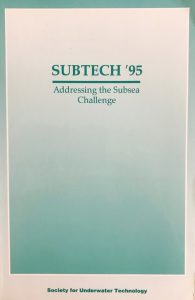 Addressing the Subsea Challenge
Addressing the Subsea Challenge
Proceedings of the international conference, held 1995 and co–sponsored by IMCA
ISBN 0 906940 27 3, Softbound, 1995
285 pp., 89 figures and tables
Order Reference C10 This book is currently out of print
These proceedings address the needs of the subsea and intervention industry during a time of financial and physical challenges, with low oil prices and a need to develop small and deepwater fields economically. The resulting technologies include improved designs and the use of new and alternative materials to help reduce the burden of routine inspection and maintenance costs, and improve operating procedures.
In addition to subsea engineering design, submersibles have evolved dramatically from sophisticated unmanned, but tethered, vehicles in the eighties, to the development of autonomous vehicles. At the same time, the industry has developed an impressive array of tools to meet the complexities of subsea tasks, and further innovations that will be needed for operations in deeper and more difficult water.
Aimed at engineers, designers and operators, these proceedings describe how the industry is rising to meet these challenges, in a programme of varied sessions.
Sections are: Keynote Address; Subsea Robotics; Deepwater Developments; Technical Developments; Diving and Physiology; and Operational Experience.
Contents
- The Subsea Business Revolution–Sink or Swim for Offshore Contracting – R Shepherd
- RD&D in the Market of the Millennium – K Bassiti
- Dangerous Encounters: Safety to Installations and Fishing Gear – K Knox and AG Hopper
- Inspection of Subsea Nodal Welds by the ARM Robot Manipulator – DR Broome, TJ Larkum and MS Hall
- The TUUV Program, I Edwards; An AUV for Pipeline Survey–The Next Step in Low Cost Remote Operations Technology – J Gooder and A Tonge
- Unmanned Mini–Submarine for Offshore Inspections – A Bjerrum, B Krogh and L Henriksen
- Deepwater Welding and Intervention Technology – JH Nixon and IM Richardson
- SnapLay–A Modular Pipelay Technique – M Craig and M Dick
- Remote Low Cost Subsea Control System – P Hands
- Back to Basics–The Economically Alternative Tree Design – AC Dyson and JC Cullion
- The Next 5 Years, M Witton; Integrated Subsea Production Surveillance: Sensors for Subsea Production Systems – ELE Kluth
- Detecting Freespans in Sidescan Sonar Records–Automatically – C Reid and AD Tress
- Horizon 2000: A Novel System Approach to Inspection and Integrity Monitoring of Flexible Flowlines and Risers – B G Redden
- Testing Communications Systems on Diving Installations – V Flook
- The IMCA–HSE–UKOOA Dive Data Management System (DDMS) – JC Gardiner and ST Brooke
- Noise Hazard in the Diving Environment – J Nedwell and K Needham
- Development of Cyclops–A Diver–s Helmet Display System for Offshore Inspection and Maintenance Operations – AG Robinson and N Wright
- Operational Experience of Multipass and Backfill Ploughs – JB Machin
- Work Class ROVs: What are the Performance Limits and How Can They Be Extended? – HW Williams
- Towards ROV–less Installation: Experience Gained on BP Cyrus – I Edwards
- Fulmar SALM Buoy Removal–An Application of Cold Cutting – A West and AG Counsell
- Cold Cutting for Decommissioning – T Copros
 Proceedings of an International Conference held 22-24 September 1998
Proceedings of an International Conference held 22-24 September 1998







